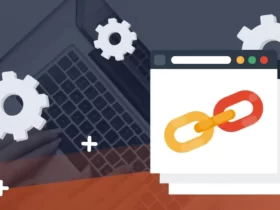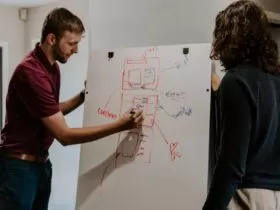If you’re an avid watcher of The School of Life or Kurzgesagt, you might enjoy the educational content on YouTube. But since these videos are difficult to create and might not be as appreciated as other channels, we may need more content creators who want to pursue this career path. And if you fancy learning new things, you might become one of those people behind successful channels. So, we’ll get through what you may need to start such a channel to bring value to the world.
Image source: https://unsplash.com/photos/NmGzVG5Wsg8
How to start an educational YouTube channel
Choose a subject
Luckily, if you know how to present the information, you’ll be successful no matter what you choose. At first, it’s important to focus on a single concept and create visuals and stories around it so that viewers can get a sense of what you add to the platform. For example, if you’re into history, you should stick with it, as it’s an enormous subject to discuss. You can take any period from the beginning of times until modernity, and you’ll indeed have valuable content.
If you have settled on a subject, you must have a YouTube channel name that people can recognize and write a short description of who you are and what kind of content you create. If it sounds difficult, take it as creating a brand identity, and if you treat it like business, you might make yourself more attractive to your target audience.
Create qualitative content
Now that you’ve decided on what you want to create, it’s time to get serious and think of how you can provide quality content instead of thinking about quantity (which can usually reward you financially more). Nothing is wrong with wanting to earn money, but when it comes to education, there should be at least one part of you considering delivering qualitative content. That means you will have to make research on the subjects you want to discuss and then set up a preferred way to write your stories, animate them, and present information in a way that’s easy to digest.
For example, you might need a voice over for your texts because reading long documents might be more challenging than you’d think. You need to be articulate and speak in such a manner that even non-English speakers can understand you. Moreover, you won’t be able to read your documents thoroughly without making mistakes, or your voice will start cracking.
But there’s a solution to minimize the time you spend creating and editing your videos ―an English voice actor and the best tool to edit videos like an online video editor. You can choose whomever you think fits the vibe of your channel and focus your attention on your writing and editing.
Learn YouTube SEO
Reaching the target audience doesn’t happen that easy. You need to optimize your content through SEO (Search Engine Optimization) to improve organic search results. If users can find you easily by typing a specific keyword, you’ll be more accessible. But this optimization is also linked to the creation of your videos, meaning that they’ll need to be SEO-friendly for people to find them at the top of the search results. You can do that by:
- Performing quality keyword research to use on your titles, tags and descriptions;
- Creating transcriptions and captions for the videos;
- Making longer videos (10 minutes and more);
- Creating custom thumbnails for your videos, which can increase your traffic and watch time;
- Making frequent CATs (call-to-action);
- Keeping an eye on your analytics;
- Promoting your channel on other social media platforms;
- Increasing your click-through rate;
Be constant
You’ll want to be constant with your videos so that people will learn about your schedule and look forward to your content. Making a video calendar will help you organise and construct your videos properly. You can start by posting once a week, according to the best days to post from your region. For example, it’s best to post on the weekends between 9 and 11 AM, while on the weekdays, you should publish them between two and three PM. But it highly depends on your target audience. For example, young adults tend to watch more from Thursdays to Saturdays.
Aim for higher engagement
More views don’t always mean more engagement; these two factors are different but essential. Viewing is related to how many people have clicked on the video while engaging means how many of those have commented or distributed your video. People usually need more watch time before becoming part of a YouTuber’s community.
But views are also a part of the engagement metrics provided on the platform, so they’re still important. Yet you’ll need to focus on creating retention among your audience because that’s how you’ll get more people to subscribe to your channel. So, you need to make sure you don’t ignore your viewers and answer their comments, chat with them and make your videos user-friendly, so they’re accessible for everyone to understand.
Collaborate with other creators
One benefit of being a small creator is that you can collaborate with similar-sized YouTube channels that share the same interests, which is why you need to know what others are creating. If other YouTubers have already formed a community, by collaborating with them, you can get more people interested in what you do as well.
Collaborating can be anything from creating a video together, answering questions regarding your subjects, going live, and much more! Making fun and natural videos will convince people that you’re worth a watch because it matters who is behind those videos, after all. You can even collaborate with brands and offer people discounts and special offers if they subscribe to you and buy from that business. All in all, there are numerous benefits for both parties when collaborating on such a platform.
In conclusion
Creating an educational channel is for sure challenging, but as long as you follow your goal ― of educating others and spreading awareness about the world around us, you’ll succeed. Still, you need to learn one or two things about promoting your content on YouTube and making valuable and qualitative content.



























